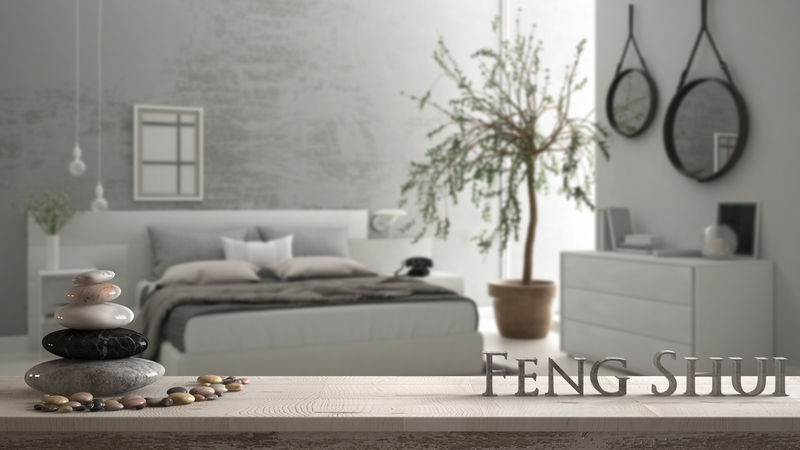
Feng shui is a philosophy that looks at how to improve the flow of energy in our homes. Feng shui originated in ancient China, and was developed to assist people in how to place their homes in relationship to environmental conditions. In the modern world, I like to define feng shui as “mindfulness of spaces.” When we can be aware of the details in the spaces around us, we can connect to and create homes that nurture and support us.
Begin to incorporate feng shui principles into your life by fixing five of the most common home decor layout mistakes. Luckily, most of these are simple to correct. But if you can’t, remember to do the best you can with what you have.
Blocked Doors
In feng shui, the door represents your voice. Doors are also how energy flows in and throughout your home. More often than not, I see doors that are blocked and not able to open a full 90 degrees. Sometimes there’s a bunch of clutter hanging behind the door. Other times, there’s a piece of furniture blocking the door from opening fully. Either way, clear out the clutter and remove the furniture so that you can invite a good flow of qi (life force energy) into your space.
Beds Out of Command
One of the most important principles in feng shui is called the commanding position, which puts us in control of our life so that we can relax and see opportunities coming towards us. It’s pretty common that a bed is placed out of command. To make sure the bed is in command, you want to be able to see the door without being directly in line with it while laying in bed (sitting back to the headboard). If you are directly in line with the door, you’re in the so-called “coffin position” with your feet pointed out the door.
To correct a bed out of command, the first and best choice is to move it. Usually, it’s best to be diagonal (or “kitty-corner”) to the door. If this is impossible because of the architectural features of your bedroom or space constraints, you can alternatively place a mirror so that when you are in bed, you can see the door in the reflection.
Bed Up Against a Wall
For adults, their primary bed should ideally have the headboard securely against a solid wall with space on the other sides of the bed. Although it may save space to have a bed pushed up against the wall, this creates an imbalance of yin and yang for the inhabitant. Even just 18 inches of space can make a big difference. It’s also ideal for there to be room at the foot of the bed so you have space to move forward in life. If this is not possible and you don’t have the space, just do the best you can.
Desk Facing the Window
Your desk represents your career and work in the world. It’s alluring to place your desk right up to that window facing your beautiful garden view, however, in most cases it’s not good feng shui if this is your primary desk. What happens is that your qi goes straight out the window and away from your work. The window view becomes a distraction. I don’t know about you, but instead of sitting all day at my desk daydreaming, I would prefer to be at my desk and focused at the task at hand. Then when that work is complete, I’d take a nice stroll and spend time outside in the garden with friends and family. If the only place to put the desk is in front of the window, then pull the shades while you’re working so your qi stays with you at the desk.
Desk in a Bedroom
Because your desk is a symbol of your career and work, it makes our work-life balance very tenuous when we have our primary desk in the bedroom. You see the desk when you’re going to bed, which makes you think about work. Alternatively, you see the bed when you’re working and that may make you drowsy and want to rest. More and more, we are having difficulty turning off and not working all the time. A desk in the bedroom contributes to this imbalance. So, what can you do? Ideally you want to move the desk out of the bedroom.
However, it’s understandable that a lot of people have desks in the bedroom due to lack of space. One way to work with this is to create a visual separation. You can use a curtain, a screen, or even a freestanding bookcase as a divider. It’s also helpful to turn off the computer, then cover it or put it away at the end of the workday so that there is a visual and energetic boundary in place.

